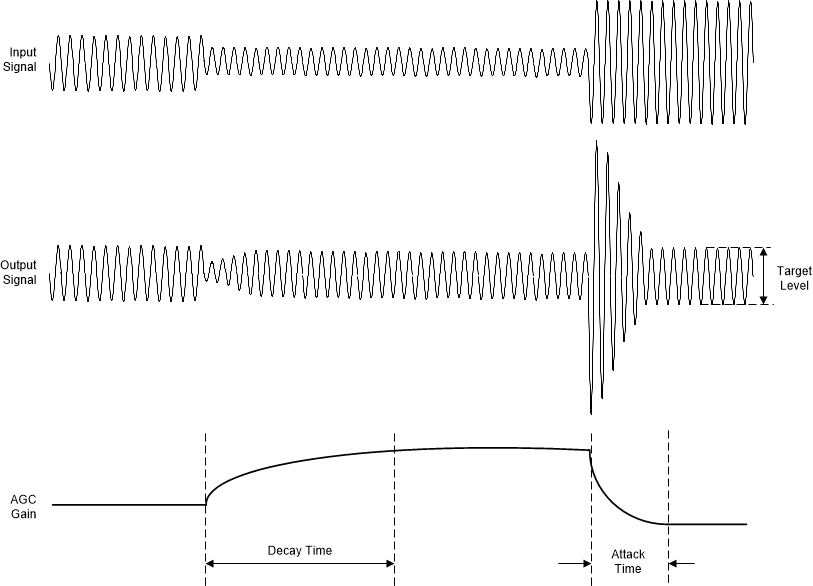SBAA492A September 2021 – April 2022 PCM3120-Q1 , PCM5120-Q1 , PCM6120-Q1 , TLV320ADC3120 , TLV320ADC5120 , TLV320ADC6120
1 Introduction
Automatic Gain Control (AGC) is an algorithm that dynamically controls the gain of a signal to maintain a nominally constant output level. A typical example application for AGC occurs while recording speech signals when the speaker is changing his or her distance from the microphone while speaking. Sound pressure levels at the microphone vary inversely with distance to the sound source. Therefore, microphone output levels are weak for the farther sound sources, and loud for the closer sound sources. Without AGC and just a fixed-gain PGA, output levels vary from soft to loud as the person moves closer to the microphone. With AGC enabled, the input level variation can be maintained at a constant level. Thus, AGC automatically responds to changes in the input signal to maintain a fixed level to meet target application requirements. Figure 1-1 shows how the AGC responds to a tone whose level falls below the target level and then rises above it.
 Figure 1-1 AGC Example
Figure 1-1 AGC ExampleAutomatic Gain Control (AGC) is supported on all ADC channels of the TLV320ADCx120 and PCMx120-Q1 device family. This application note describes the operation of the AGC, the tunable parameters, and the device configurations required to support AGC.